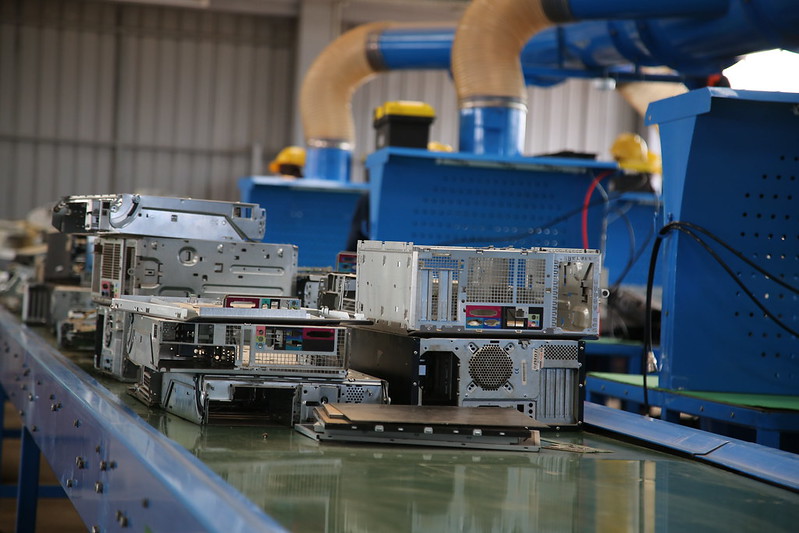In the heart of London, behind the scenes of our tech-savvy lifestyle, lies a facility that stands as the city’s response to the growing issue of electronic waste (e-waste). I spent a day at one of these facilities in Greenwich, and it profoundly changed my understanding of what happens to our discarded gadgets.
Discovering the Scale of E-Waste
My journey into the world of e-waste recycling began when I stumbled upon a startling statistic: Londoners dispose of thousands of tonnes of electronic devices each year. Driven by curiosity and concern, I decided to see how these unwanted items were dealt with. The facility I visited recycles everything from mobile phones to large household appliances, breaking them down to salvage valuable materials and prevent harmful substances from damaging the environment.
The Heart of the Operation
The electronic waste facility was a hive of activity. Piles of old electronics, from cracked screens to outdated laptops, filled the sorting area where each item was meticulously categorised. My guide for the day was Mike, a technician working in e-waste management for over a decade. He explained that properly disposing of electronics is critical as they contain precious materials like gold and silver and hazardous substances such as lead and mercury.
As we walked through the facility, Mike showed me the dismantling area where electronics are broken down into their components. This process, he explained, is both manual and mechanical, ensuring that each part is appropriately handled. For example, batteries are carefully removed to prevent fire risk, and glass from screens is separated to avoid contamination.
The Impact of Recycling Electronics
Mike shared some impressive figures with me. By recycling electronics, the facility recovers valuable metals and prevents significant amounts of toxic chemicals from ending up in landfills. This process conserves natural resources and reduces the environmental footprint of new products.
Moreover, the facility collaborates with manufacturers for responsible sourcing and helps promote the circular economy within London. This collaboration ensures that new products are designed with recyclability in mind, making future e-waste easier to process.
A Personal Reflection on E-Waste
Visiting the e-waste facility was an eye-opening experience. It made me more aware of the lifecycle of the electronic devices we often take for granted. Back home, I looked around at my own devices—each likely to become e-waste one day—and felt a newfound responsibility to ensure they’re disposed of properly when the time comes.
Since then, I’ve become an advocate for electronic waste recycling, sharing information with friends and family and encouraging them to consider the impact of their electronic purchases. I’ve also started volunteering at the facility once a month, helping to educate others on the importance of e-waste recycling.
Breaking down barriers in e-waste doesn’t just happen in recycling facilities; it starts with each of us at home. By choosing to recycle our electronics, we can help reduce the strain on the planet and contribute to a cleaner, more sustainable London.
If you’re unsure how to dispose of your electronic waste, local councils and certain retailers offer recycling programs. You can also drop off old electronics at designated recycling points across the city.
Join me in making e-waste recycling a standard practice in our community. Let’s ensure that the devices that have enhanced our lives don’t harm our environment. Share your thoughts and actions in the comments below. How do you handle your electronic waste?


